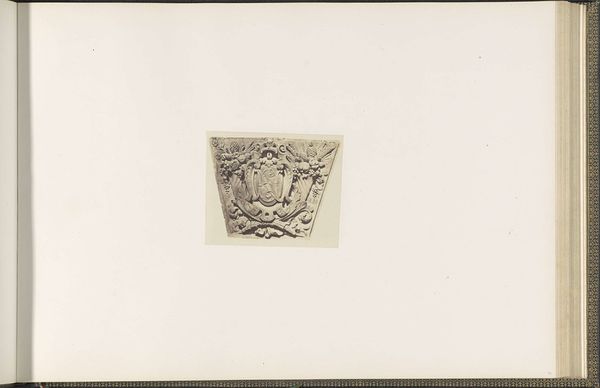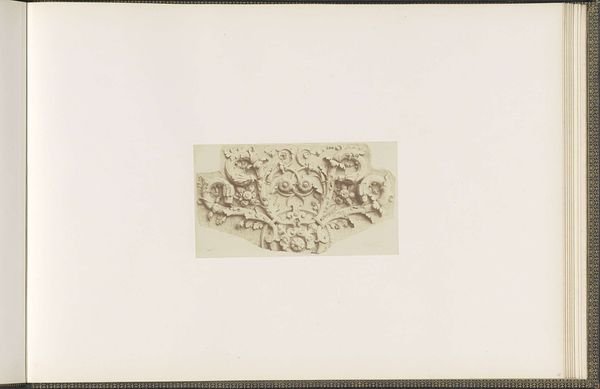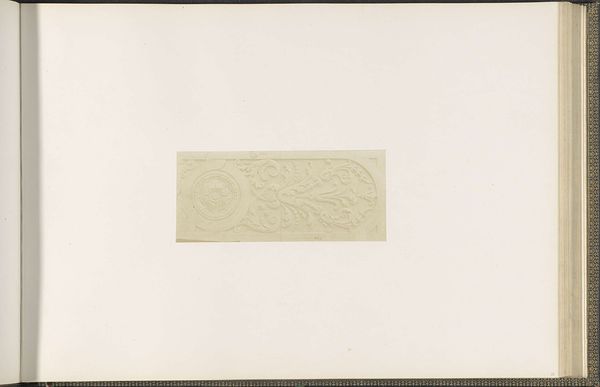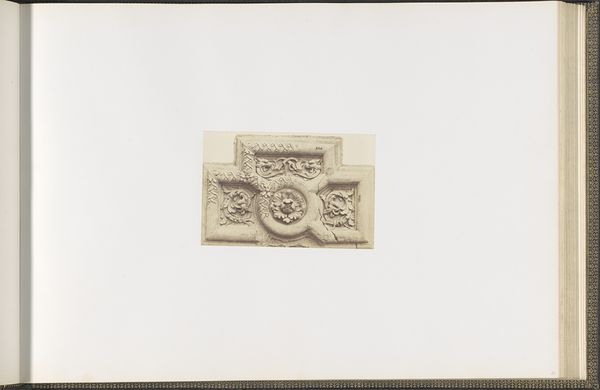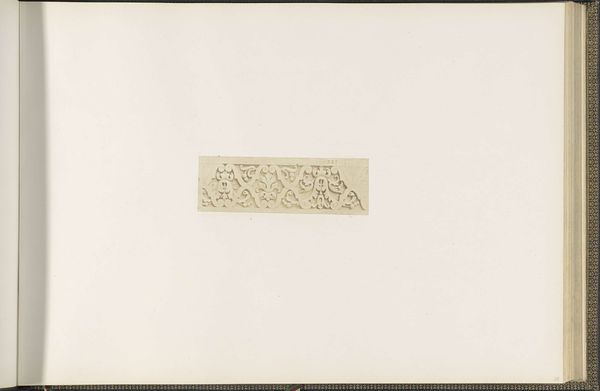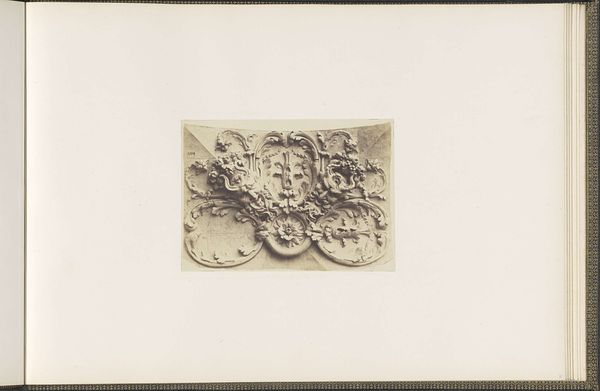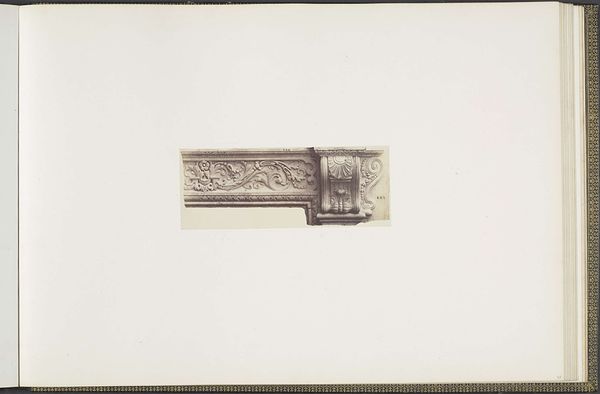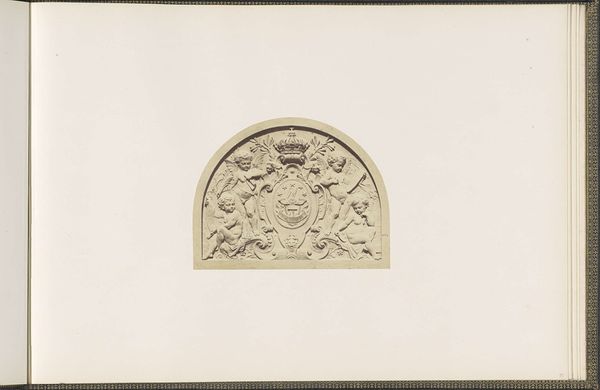
Gipsmodel voor een friesversiering op het Palais du Louvre c. 1855 - 1857
0:00
0:00
relief, photography, plaster
#
neoclacissism
#
relief
#
photography
#
plaster
Dimensions: height 376 mm, width 523 mm
Copyright: Rijks Museum: Open Domain
This plaster model for a frieze decoration at the Louvre, captured by Edouard Baldus, presents a fascinating study in classical motifs. Note the mask of a river god or perhaps Oceanus, flanked by stylized acanthus leaves. These elements, deeply rooted in antiquity, speak to the enduring power of classical forms. The mask, with its flowing beard and intense gaze, is a direct descendant of ancient Greek and Roman sculpture, emblems of authority and power. We see this recurring image, the 'pathos formula' of the river god, in countless fountains and architectural decorations across Europe. Over time, the river god, initially a symbol of nature’s untamed power, began to embody civic pride and control over natural resources. The persistence of this motif reveals a collective memory at play, our subconscious drawn to the emotional intensity and symbolic weight of these classical forms. This is more than mere decoration; it’s a psychological bridge connecting us to the past.
Comments
No comments
Be the first to comment and join the conversation on the ultimate creative platform.
